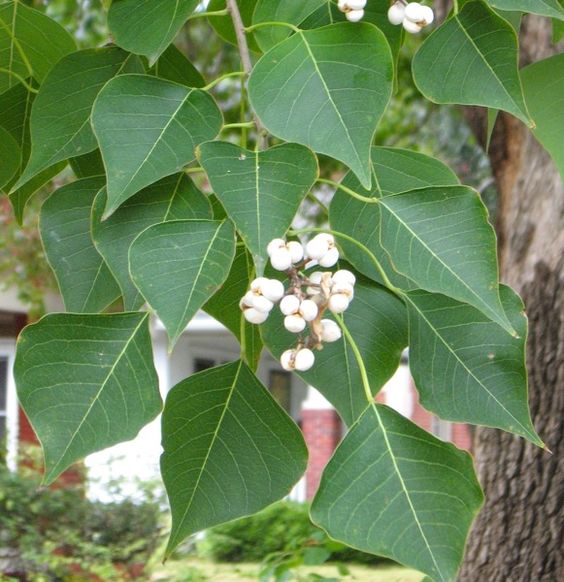Texas Honey Comb offers
Our Texas Tallow Trees produces honey for a a medium to full body, rich, robust flavor with subtle woody undertones. It’s often a higher moisture honey due to the coastal region’s high humidity It exhibits a full-bodied pleasantness with a hint of dark amber spice notes that is sure to delight. Our Tallow honey is dark amber, rich with warm spices and has a sharp aroma!
If you suffer from Allergies this is the key to helping with your immune system and be prepare to enjoy some allergy relief benefits from consuming honey This honey is as rich as sorghum and full of antioxidants.
Tallow tree honey is produced by bees that harvest nectar from the Chinese tallow tree (Triadica sebifera), which is native to the coastal prairie along the Texas Gulf Coast. The tree was introduced to the Houston area in the 1950s as an ornamental landscaping tree.
Tallow tree honey can be used in a variety of ways, such as: Drizzled over fresh ricotta, Swirled into warm oatmeal, Added to grilled meats or homemade biscuits, Used as a sweetener for afternoon tea, and Added to light pastries.
Tallow trees in Texas are an attractive shade tree with waxy, green, heart-shaped leaves that exhibit beautiful fall colors that rival maples in their yellows, oranges and scarlets (see photo below). It can grow to 60 feet in height and 30 feet in width and live to be 100 years old. It is the definition of hardy. It does well in a range of soil and light conditions. It likes warm temperatures but can withstand light frosts. It can also tolerate flooding, even saltwater flooding.

It is monoecious, producing male and female flowers on the same plant, and has an unusual flowering strategy, called dichogamy, that involves different flowering times and requires having at least two sub-populations. Dichogamy contributes to having a high genetic diversity within the same stand. The yellow or white, very sweet smelling, flowers occur within an inflorescence spike of up to 20 cm long (April-June). The flowers produce capsules that change from green to black (September-October). The capsule walls then fall away to expose white wax-covered seeds. These seeds stay on the tree for several weeks.
Be the first to review “Texas Raw Honey” Cancel reply
You must be logged in to post a review.



Reviews
There are no reviews yet.